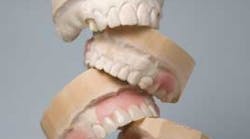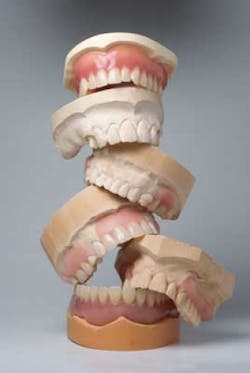Hiring an Associate: Employee or Independent Contractor?
by Barry F. Levin, Esq. and Philip M. Bogart, Esq.
Hiring an associate as an employee or an independent contractor is not a very original subject for an article for the dental industry. It is not a new issue. In fact, employers have used (or abused?) the independent contractor classification for many years. Those days may be numbered.
Having an additional dentist in the office can have numerous advantages, including growing the practice, easing the burden of the senior dentist and, sometimes, providing the senior dentist with an exit strategy, as the associate may become a future buyer of the practice. With all of its advantages, misclassifying the associate, however, is one potentially costly mistake that should be avoided like periodontal disease.
Sometimes, one of the initial questions posed to these authors is whether a dental associate should be hired as an employee or an independent contractor. Or, using the parlance of accountants, whether to hire the associate as a “W-2” worker or a “1099” worker. Sometimes, based upon advice from colleagues (or even accountants), dentists avoid asking their attorney and assume that an associate may be hired as an independent contractor.
For a dental practice looking to cut costs, hiring independent contractors can be quite enticing. For example, the practice would not be required to pay for its typical share of payroll taxes (e.g., unemployment and Medicare). Rather, some of these costs are passed on to the associate independent contractor. Additionally, the practice would not be required to provide the contractor with the same benefits enjoyed by other employees in the practice. Plus, many of the federal and state employment laws designed to protect employees are not applicable to independent contractors. It is no secret; aggressive dental practices (and even practices that do not view themselves as aggressive) can save significant amounts of money by hiring associates as contractors and not employees.
However, while not impossible, it is very hard to justify hiring a dentist as an independent contractor. If the practice is questioned or audited, it can be quite challenging to withstand the scrutiny of the agency doubting the practice’s classification. There are many federal and state agencies that have an interest in the practice making the correct classification. Aside from the IRS expecting its share of the payroll taxes, there are many other agencies that are affected by a practice’s misclassification of its dentists.
So, what’s new? Within the last few years, governmental agencies have increased their scrutiny of employers that classify their workers as contractors. This increased scrutiny has attacked all employers, not just dentists. More audits are being conducted; federal agencies have begun exchanging information about employers and, in some states, specific “task forces” have been assembled to fine employers that misclassify their employees. There has also been legislation making it even more difficult to justify hiring an independent contractor. In many states, there is a virtual presumption that certain workers are employees, with very few exceptions. By pursuing employers that misclassify their employees, federal and state agencies have been able to recover a significant amount of lost tax revenues, fees and penalties. Indeed, penalties can be applied retroactively. n these tough economic times, agencies are not willing to leave any money on the table.
As a result, now is the time to ensure that your dental practice’s workers are all correctly classified. If in doubt, it may be cost effective to assume that the associate is an employee. Revisit this issue soon — once that notice letter is received from the IRS or a state agency, it will be too late.
Factors used in determining whether an associate is an employee or an independent contractor
Ultimately, as it is in many areas of the law (and dentistry), classification depends upon the facts and circumstances of each case. In addition, each governmental agency has its own list of factors. The IRS, for example, developed a nonexhaustive 20-factor test in 1987, which was condensed into an 11-factor test in 1997, grouped into three categories. Each state has its own criteria, as well. In fact, even within certain states, there are different standards for different agencies. As a result, it is crucial to work with a legal advisor who is familiar with the federal, state, and local laws and regulations to decide whether classifying an associate as an independent contractor can be justified. Without going through the range of criteria used by various agencies, there is one common challenge that must be overcome for dental practices classifying an associate as an independent contractor. That challenge is “control.”
Typically, an employer/employee relationship will exist when the practice controls what is being done by the associate and how it is being done by the associate. Keep in mind that the mere fact that the practice has the right to control is important (not whether the practice actually exercises its control). The mere fact that the associate works part-time will not, alone, justify an independent contractor classification.
The following are some factors that are important to consider in order to determine whether the associate is subject to the control of the dental office (and, therefore, not an independent contractor). Some factors are given more weight than others. Depending on the agency or the court making the determination, any one factor could be either dispositive or only one of many factors included in the final determination.
- The senior dentist trains and oversees the work of the associates (especially recent graduates).
- The senior dentist must approve of each diagnosis and treatment plan.
- The associate provides the same services as other employees, and appears to be very similar to other dentists in the practice that are classified as employees.
- The associate uses the dental practice’s equipment, instruments, and/or supplies. Plus, the services are performed on the premises of the dental practice.
- The associate does not provide similar services for any other dental office.
- The associate is bound to a practice handbook or other internal rules and standards. (This might even be called an “Employee Handbook”).
- The associate has certain “employment” benefits from the practice.
- The associate’s schedule is controlled by the practice.
- The associate is required to be in the office during certain hours; he or she cannot come and go.
- The associate uses the hygienist and other support staff of the practice.
- The associate can be terminated at will.
- The practice (not the associate) bills patients or third-party payers.
- A restrictive covenant prohibits the associate from working for other dentists (both during and after the engagement).
What’s In a name?
If the agency believes the worker is an employee based upon all relevant factors, a contract designating the associate as an independent contractor will be viewed as merely self-serving and, therefore, worthless. The fact that the associate agreement declares the associate to be an independent contractor does not make it so!
Safe Harbor
At times, under certain circumstances, a practice subject to an IRS audit may seek relief from back federal employment taxes under Section 530 of the Internal Revenue Code (i.e., the “Safe Harbor Statute”) if the practice (1) classified all of its similar associates in the same way; (2) filed all required tax forms relating to its associates in the same way; and (3) had a reasonable basis for its classification. Again, this safe harbor is only helpful under specific circumstances, and it only helps avoid federal employment taxes, not other taxes or penalties. If a practice is being audited, it should work with its legal advisor to determine whether the safe harbor would be effective.
Can a dentist ever be an independent contractor?
Again, it depends upon the circumstances of each case. As always, the work arrangement should be approved by the practice’s legal counsel. There are certain circumstances that may (but not necessarily) help, including if:
- The contractor forms an entity (e.g., a professional association), and services are provided by the entity.
- The contractor provides services to multiple practices.
- The contractor uses his/her own office, equipment, instruments and/or supplies.
- The contractor sets his or her own schedule with his or her patients.
- The contractor bills and collects fees directly from patients.
- The contractor provides services not provided by the practice (e.g., a dentist with a specialty provides services to patients of a general dentist)
Beware — in these types of situations, the contractor should also work with his or her legal advisor to ensure that the arrangement is not deemed to be a prohibited fee-splitting or a payment-for-referrals scheme.
To summarize, a practice that misclassifies its employees may be exposing itself to great risk. In many situations, a practice can be required to satisfy unpaid federal and state employment taxes, as well as FICA taxes. These taxes are in addition to penalties (not to mention the legal fees that a practice may incur in attempting to defend its misclassification). Any temporary savings will seem miniscule compared to the losses incurred if the IRS second guesses the practice’s designation. Rarely does it make sense for a dental practice to hire its associate as an independent contractor.
Barry F. Levin is a partner and chair of Saul Ewing LLP’s business and finance department. Philip M. Bogart is a special counsel in the business and finance department in Saul Ewing LLP’s Baltimore office. Messrs. Levin and Bogart regularly represent dentists — and the business entities in which clinicians practice — in all aspects of the dental practice structure through and including the structuring, negotiation, documentation, and implementation of associateships or employee arrangements, partnership arrangements, acquisitions, and sales and mergers of mature practices.They are also co-chairs of Saul Ewing's Dental Transitions Practice. Visit the website at www.saul.com.






